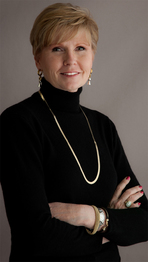Time’s Not on Our Side: The Aging of America
By Nancy May, President and CEO, BoardBench Companies
As seen in The CEO Forum Magazine
To state what should be obvious: board members are bound to protect the long-term viability of their companies. Doing this well requires experienced insight that can spot long-range threats and opportunities. That is what directors bring to the table. Armed with these insights, management can better focus on how to avoid or take advantage of such issues.
Disruptive events come in two forms: sudden or gradual. Quite harmful events such as a major data breach, cyber attack or serious reputational misstep can come on suddenly and without warning. Hence, contingency plans. Gradual disruptions such as advances in technology, shifting customer preferences, and new competitors, usually leave lots of time to prepare, if properly identified. Of course, thinking you have plenty of time is often what kills you.
It seems that too few directors see the next major disruption to society, government, business, and even the economy: the aging of America. Unfortunately, there doesn’t appear to be a major, concerted effort by anyone to prepare for the inevitable upheaval that’s coming.
Reports say that our nation and others may have already pushed past a tipping point. Each day, 10,000 people (3.7 million annually) turn 65 and enter the ranks of the “elderly.” This segment is growing faster than any other and will eventually become the largest of the age groups.
become the largest of the age groups.
Alibaba’s Jack Ma once said that a company’s top priorities, in order, are its customers, its employees, and its investors. Directors (and that should be all of you) willing to focus on this now will need to understand and direct strategies for dealing with this coming sea change. A good start would be to parse your efforts into understanding what this means for your customers, your employees, and your investors. So what should you be asking?
How will customer demand for our products change?
Focusing on customers is the most important since having no customers means having no business. Within 20 years the over-60 population is expected to reach 30% in industrialized nations, making it the largest of all segments. This segment shops differently, reacts differently to advertising and spends differently from all other segments. For example, healthcare products and services are a prime and growing concern for them. You should learn what this huge consumer segment wants and will need. What they want may not be what you are offering.
While studies indicate the over-60 market is the wealthiest of all, the fact is they are also living longer. The chronic conditions that come with aging, despite advances in medicine, come with geometrically increasing costs. Right now, critical full-time care at home or in a facility can easily well exceed $100,000 per year. Once government spending on the elderly reaches a tipping point (in 10 years it could be 50% of the nondebt-service budget), you can expect such costs will be borne more and more by the elderly and also by younger generations. Will these costs crowd out much of their discretionary spending on things like your goods and services? Only time will tell. But if it does, will you be ready?
How secure is our future labor force?
Why should companies focus on their employees almost as much as their customers? Because without employees you have no company. Loyal, productive employees sustain and grow a company and its business. Despite the hype, businesses will never be able to completely automate. Attracting and retaining good employees has always been a challenge, and that will grow and become daunting for almost everyone! The aging world is already disrupting human resources/capital on two fronts.
First, the number of older workers is increasing, while younger workers are not. Replacements for retirees are no longer assured.
Second, the expanding need to care for the elderly is already creating havoc. Estimates are that 20% - 32% of all U.S. workers have left, or will leave, their jobs and careers in order to care for a family member. Do a Google search on Celebrities Who’ve Become Caregivers for some interesting insights.
The impact of caregiving on employee productivity seems obvious to caregivers, but it’s not generally perceived nor understood by employers. The reasons for lower productivity and increased employee costs due to caregiving responsibilities need to be better tracked and understood by companies, or such costs will just continue to mount. Also, the pool of lower wage, less skilled workers are shifting and will shift away dramatically from other sectors. Care service providers already outnumber those who produce or provide other kinds of services. Market demands will eventually create critical shortages in filling low-wage jobs in food services, agriculture, and manufacturing.
Breaking with traditional recruiting methods, encouraging older workers to stay in or re-enter the workforce, providing eldercare benefits and support, and adapting to help employees balance their work and home lives, are all being considered by those who can see ahead. More will be needed, and sooner than expected.
How will current and future sources of capital be affected?
Some say that, with the aging and eventual disappearance of Baby Boomers, we are on the verge of the greatest wealth transfer in the nation’s history. Others, including myself, foresee that wealth will not be going to succeeding generations. Baby Boomers control some 80% of the nation’s wealth and are living longer, and really want to continue living longer. But the longer you live, the more and more it will cost you. Where do you think that wealth will go? Hint: remember that $100,000+ per year? It may not be going to you!
Issuers of public equities need to grasp that retirees are multiplying and living longer after retirement. This means greater demands on large institutional investors such as pension funds to meet increasing obligations: payouts that are not discretionary. You may have to stop looking at these investors as passive, stable and dependable sources of capital.
Institutional investors already are and will continue evolving as the new activist investors. They will be the ones demanding changes to your board, your operations, and your capital structures. Eventually, they will become the ones looking to “unlock value” in your holdings. They will have no choice.
So, how many of you have talked with your CEOs and Chief Risk Officers about all this lately? Not yet? There’s still lots of time? Good luck with that. Remember, for all of us, time just keeps on flying.

Nancy May, President, and CEO of The BoardBench Companies has been cited in Forbes as one of America’s governance experts and is Host
of the respected Boardrooms’ Best podcast. She has over 25 years’ experience as a strategic advisor to high-growth, mid-cap, and Global 100 public and private companies.
